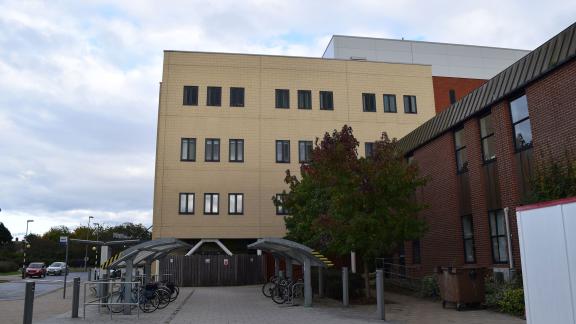NHS leaders facing real-terms cut in funding

NHS leaders face impossible choices over whether to cut patient care or reduce investment in much needed diagnostic capacity and new technology after a series of unexpected cost pressures, including a new pay award for staff, left the NHS facing its first real terms cut in funding.
The government has now confirmed that it will make further investment in the pay of NHS staff of approximately 5 per cent overall. However, only 3 per cent of this investment in pay has been budgeted for. With no extra money coming from the government to pay for the additional 2 per cent investment, the NHS will have to absorb this within its existing budget. This is around an extra £1.8 billion of costs that were not planned for.
The extra costs of pay are on top of a range of other unexpected cost pressures that are eating into the NHS budget, including:
- The impact of high energy costs and soaring inflation more generally, which is reducing the value of the NHS budget.
- The ongoing costs from COVID-19, including from providing free lateral flow tests for staff (these costs are no longer funded centrally by government).
New analysis from the NHS Confederation confirms that these extra costs mean the health service is this year facing a real-terms cut in funding of between £4 billion and £9.4 billion (depending on which measure of inflation is used*). This is one of the reasons why the NHS is required to make efficiency savings of 2.2 per cent, which is double the requirement of recent years.
This is a far cry from the planned 3.8 per cent annual real terms increase in NHS funding up to 2024/25, which was outlined in the government’s Spending Review last October.
Local NHS leaders now fear that these extra costs will hold back attempts to reduce the size of the elective waiting list, especially as national NHS leaders have warned that money will need to be released from existing programmes such as those designed to rollout new technologies and boost diagnostic capacity across the NHS. These are key area of investment that are required to reduce the elective and cancer care backlog.
Local leaders fear it may also result in capital budgets being raided to plug holes in the day to day (revenue) budget of the NHS. This was a common feature during the ‘decade of austerity’ in the 2010s when the NHS received the lowest annual funding increases in its history.
Matthew Taylor, chief executive of the NHS Confederation, said:
“We have been calling for the government to help NHS and social care staff with the cost-of-living crisis by increasing their pay, but what we did not expect was that these extra costs would have to come from within the current health budget. Put simply, this wasn’t budgeted for and will have unintended consequences for patient care.
“NHS leaders are used to having less money than their local services need, but what we are seeing now is a yawning gap between the funding the NHS needs and what it has at its disposal. The real terms cut this year is at least £4 billion and we think it represents the first real-terms cut in funding since 1997.
“This leaves the NHS in a perilous position: either local leaders will have to cut back patient care or accept that waiting times will continue to lengthen. We are already being told that investment in new technology and diagnostic capacity will suffer as a result of this and these are critical areas if we are to reduce the elective and cancer care backlogs. The government has placed the NHS in an impossible position.
“At the same time, candidates to be the next Prime Minister continue to make hollow claims about how the government is increasing investment in the NHS. This is no longer true. That’s why we have been calling for a realism reset about the state of the NHS to be injected into the leadership debate.
“We need the government and future Prime Minister to level with the public about the scale of the challenge facing the NHS and social care, and to do away with the myths and political rhetoric. This must include a proper acknowledgement of where the lack of investment during the 2010s have left the NHS, and the huge gulf between levels of demand and capacity. That honesty means crumbling buildings and ill-equipped and outdated estate, 105,000 staff vacancies at the last count, and a social care system in desperate need of repair and very far from being fixed as the current Prime Minister would have us believe.
“The alternative approach is for political leaders to bury their heads in the sand and wish away the reality. But, as ever, patients will suffer if we don’t collectively grip this challenge. Failure to do so will significantly impact the kind of care that the NHS can provide to the public in the months and years ahead.”
Explanatory notes: Key facts on the state of NHS finances
- The NHS has had real terms cut in funding this year of between £4 billion and £9.4 billion, based on either GDP deflator or CPI respectively.
- The government’s claim at the Spending Review that the NHS will receive an increase to funding this year is no longer accurate, owing to inflation and a cessation of Covid specific monies. This is one reason the efficiency requirements are so high for system this year.
- The NHS is subject to massive increases in energy costs.
- Every 1% pay increase above the 3% level the Department of Health and Social Care declared affordable brings a £900m extra unfunded bill.
How much money will the NHS receive this year and how does this compare with recent years?
1. The NHS Financial Direction 2022/2023 – the most up to date account of the NHS total Budget – shows the NHS will receive £152.55bn in cash terms this financial year.
2. This represents an inflation adjusted cut of between 2.65 and 6.22% from 2021/22. The inflationary environment remains uncertain, but using the most recent projections, we can see the impact on the proposed cash settlement over the course of the Spending Review 2021 period for the NHS in Table 1.
What are some of the specific examples of inflation’s impact on the NHS?
3. The NHS is subject to several costs that are rising much faster than the average, as illustrated in Table 2. Some of these costs were covered by a recent NHS England increase for systems. None of this was new money, however, and therefore any NHS England money that goes towards helping with energy costs, for example, must be made up elsewhere in NHS England’s budget.
4. We also do not yet know how what pay rise the NHS Pay Review Body will recommend. However, the Health Foundation calculates that every 1% pay increase above the DHSC’s 3% recommendation costs the NHS £900m. Any increase that comes close to matching inflation will add a large unfunded bill for the service.
Didn’t the government say the NHS is getting 3.8% real terms increase every year until 2024/25?
5. At the Spending Review in October 2021, the government set out an annual 3.8% increase in NHS England and Improvement baseline revenue funding until 2024/25:
6. This figure is for ‘baseline’ funding only does not account for inflation being higher than expected, as we outline above, nor the extra £16.92bn COVID-19 specific funding the service received in 2020/21, a figure that has reduced significantly in this financial year, despite Covid being an ongoing financial burden on the service.
What does this mean for NHS services?
7. The fall in the real value of the NHS settlement is one reason why Integrated Care Boards have been asked to find a 2.2% efficiency saving - double the regular amount – this year. Elective backlogs continue to grow, as the long-term impact of Covid over the past two years reverberates through the health system.
8. The government set the NHS’ challenging targets for efficiency, performance an activity growth under a plan for real terms increases. As such, the government and HMT must honestly set out what the public can expect given the NHS faces real terms cuts.
9. Any further increase in inflation or staff costs without a commensurate increase in funding means programmes and patient care will suffer.
About us
We are the membership organisation that brings together, supports and speaks for the whole healthcare system in England, Wales and Northern Ireland. The members we represent employ 1.5 million staff, care for more than 1 million patients a day and control £150 billion of public expenditure. We promote collaboration and partnership working as the key to improving population health, delivering high-quality care and reducing health inequalities.



